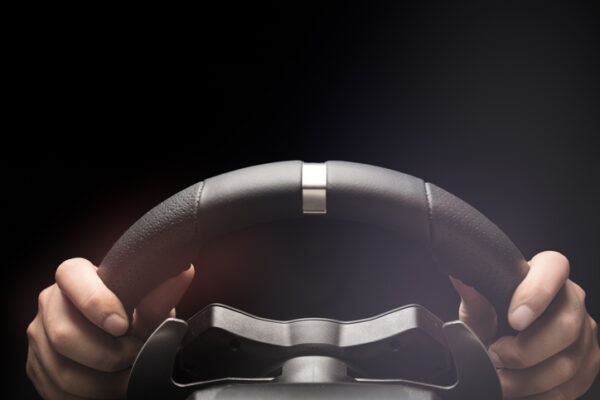Holding your steering wheel properly is one of the most critical steps you can take to ensure a safe drive. The wheel controls your entire vehicle after all. Good steering wheel technique decreases the chance of a car accident and allows you to drive your vehicle more efficiently, according to Driving Tests, a site that offers state-specific practice driving tests.
Statistics indicate that bad steering wheel techniques are the leading cause of car crashes when drivers go off of the road, according to NHTSA. You can help keep yourself and others safe by following these steering wheel positioning tips when you’re in the driver’s seat.
Proper Steering Wheel Hand Position
At some point you might have heard the phrase “10 and 2” when it comes to where to put your hands on the steering wheel. These numbers are in reference to a clock. Your hands should be where the “two” and “10” numbers would be. NHTSA’s recommendations have changed in recent years, however. The organization now suggest drivers lower their hands a bit to the “9 and 3” position. The change has been recommended in part because the “10 and 2” hand position could be dangerous in cars with smaller steering wheels that have air bags.
Since steering wheel sizes vary, review your vehicle’s owner’s manual to decide the hand position that works best for your car. Generally, the “9 and 3” steering position will keep your hands in the right place for the “push and pull” turning method. Check out the “Hand-to-Hand Steering” section below where the “push and pull” turning method” is explained in more detail.
NHTSA’s additional steering wheel hand position recommendations include:
- Place both hands on the outside of the steering wheel on opposite sides.
- Maintain a firm-but-gentle grip on the wheel.
- Use your fingers to control the wheel rather than your palms. Keep your thumbs up along the steering wheel’s face.
- Don’t turn the wheel when you’re gripping it from the inside of its rim.
Select The Proper Steering Method For A Given Situation
Your steering wheel technique is perhaps most important when turning your vehicle. There are three standard steering methods that should be used when you’re turning your car, according to NHTSA.
Hand-To-Hand Steering
While the pulling hand moves down, the hand that first pushed up moves back to its original position to make any necessary adjustments. NHTSA recommends the driver use the area of the steering wheel area between “11 and 8 o’clock” with their left and the “1 and 8 o’clock” area with their right, regardless of which way they’re turning.
Using the hand-to-hand or push/pull steering method helps prevent injuries. You hands do not cross over the steering wheel with this method, which decreases the chance of your hands or arms hitting and injuring you in the event of an airbag deployment.
The hand-over-hand steering method is best when you are turning at low speeds, have limited visibility at an intersection or parking, according to NHTSA. It’s also helpful if you run into a skid. Put your left hand between the “8 and 9 o’clock” part of the wheel and your right between the “3 and 4 o’clock” position to steer hand-over-hand.
You can use the right top third of your steering wheel to move it in that direction. Do the opposite to move the wheel to the left. As far as wheel movement, your right or left hand takes the wheel and pushes up, while the other hand releases, moves across the opposite arm and pulls wheel up—hence the term, “hand-over-hand.” When the steering wheel is pulled up, the hand that started the push releases and goes back to its original position.
One-Handed Steering
NHTSA only recommends using the “12 o’clock” steering position when you have to back your vehicle out of a space and to turn in your seat to see where you’re going. Get into the habit of looking back even if you have camera-assisted backup.
Don’t Forget About Proper Posture And Positioning
Holding your steering wheel properly increases the likelihood of a safe drive. While the wheel is important to driver safety, it’s only as effective as the rest of your surroundings. Make sure your headrest, seat and mirrors are adjusted property to match your height. You should also be able to adjust your steering wheel position, depending on the vehicle model, according to Driving Tests. Make all of these adjustments before you hit the road.
Good posture can also make for a safer and more comfortable drive. Move your tailbone to as close to your seatback as possible for better back support. Don’t sit too close to your steering wheel. You want to be close enough to reach the pedals and be able to push them with your whole foot, but not so close that you risk injuring your head, neck or chest in a collision.
You should also adjust your rear-view and side mirrors you can see the traffic behind you without having to crane your neck. Save your head turning for when you need to check your blind spots before changing lanes.
As your steering wheel goes, so does your car. Keep your two hands on the wheel, preferably at the “9 and 3” position, use the property turning techniques and make sure your other car settings are correct to ensure you, your passengers and other drivers are all safe on the road.
Find out how much you could save on GEICO auto insurance and get a free, no-obligation rate quote today. GEICO offers discounts in some states for policyholders who’ve taken a defensive driving course and have a young driver in the family who completed a driver’s education course. Full-time students with a good academic record could also get up to a 15% discount on certain coverages.
By Joe Dyton
